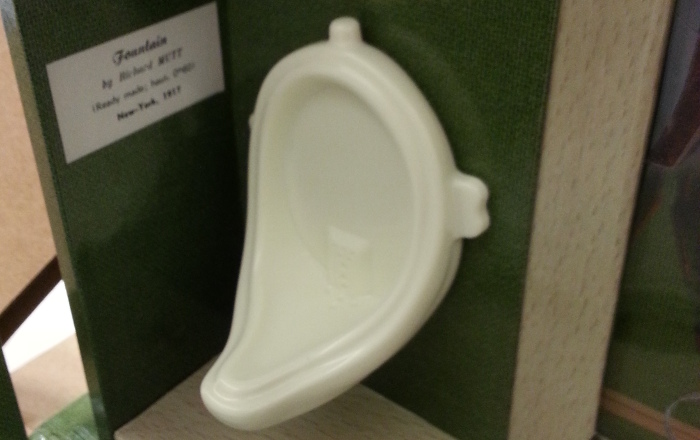I’m reading Calvin Tomkins’s biography of Marcel Duchamp (Duchamp: A Biography) and today learned something new and surprising: Duchamp trained and worked (briefly) as a librarian.
In November 1912, for various reasons, Duchamp was fed up with painting.
Now, in order to concentrate his energy on the large-scale work that he had conceived in Munich, he decided to withdraw from all other artistic activities and to look for a job that would supplement the modest allowance he still received from his father. What sort of job? One that would not take up too much of his time, obviously. Picabia found the solution. His uncle, a bon vivant and man-about-town named Maurice Davanne, happened to be director of the Bibliothèque Sainte-Geneviève, one of the city’s most distinguished research institutions. With Davanne’s assurance of a future position, Duchamp enrolled that November in a librarian’s course at L’Ecole Nationale des Chartes. A library job appealed to him because it meant “taking an intellectual position as opposed to the manual servitude of the artist,” but he was not giving up on art. As he would later explain, “There are two kinds of artists: the artist who deals with society; and the other artist, the completely freelance artist, who has nothing to do with it—no bonds.”
I repeat: librarianship meant taking an intellectual position as opposed to the manual servitude of the artist.

A few pages later (from p. 110 to p. 119):
Having completed his course in library science at l’Ecole des Chartes, Duchamp started work as an intern at the Bibliothèque Sainte-Geneviève in April or May. “It was a wonderful job, because I had so many hours to myself,” he said. “My hours were ten to twelve and one-thirty to three, and I got five francs a day. My father helped me, and I wasn’t married, so it was plenty.” Duchamp took advantage of the library’s research facilities during this period to carry out the only serious, sustained reading that he would ever do in his life.
This was at an important point in Duchamp’s artistic development. The implication is clear to me.

(Images are of two small parts of the magnificent De ou par Marcel Duchamp ou Rrose Selavy: Boîte-en-Valise, a replica of a box Duchamp made containing examples of all his art.)
 Miskatonic University Press
Miskatonic University Press